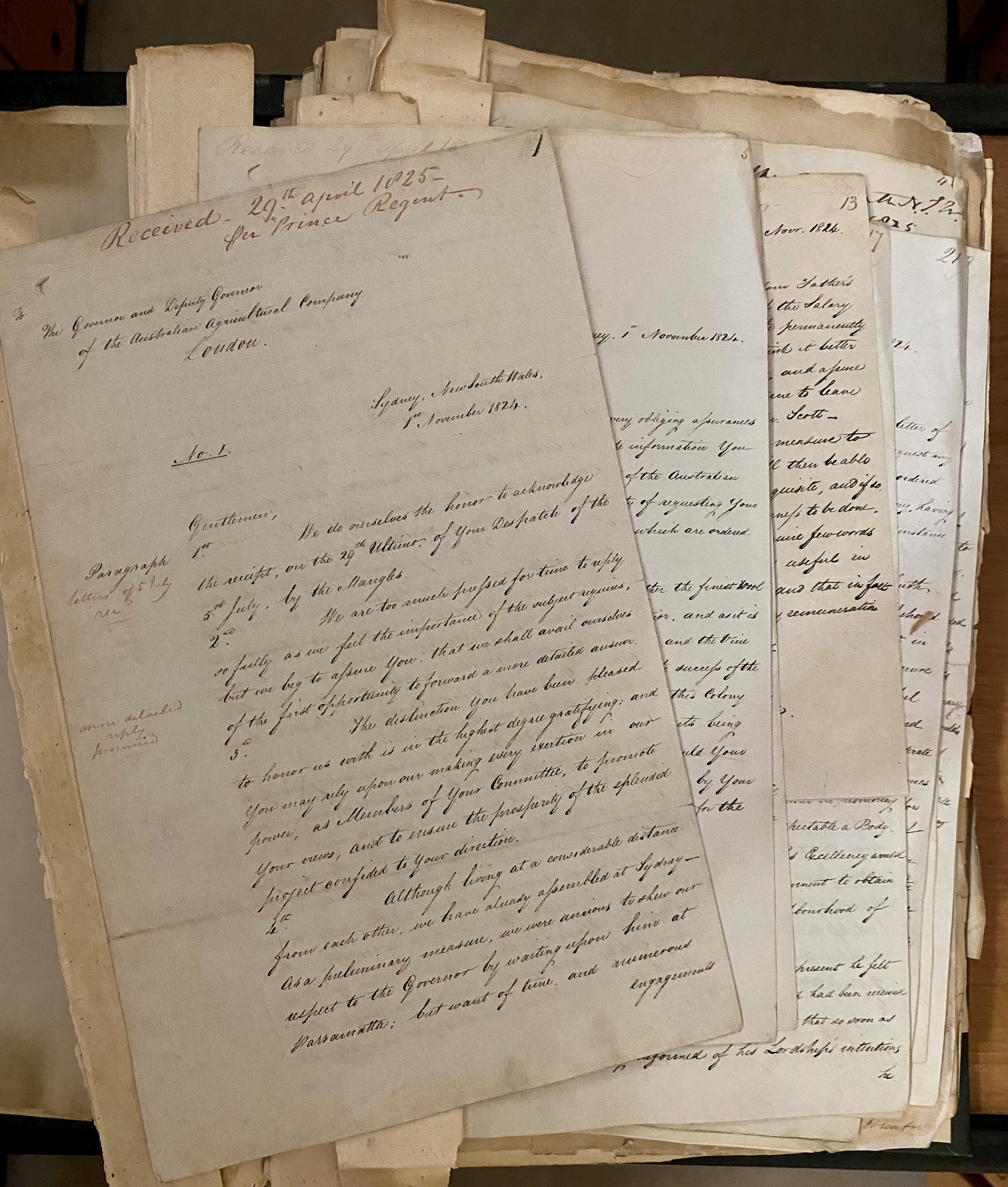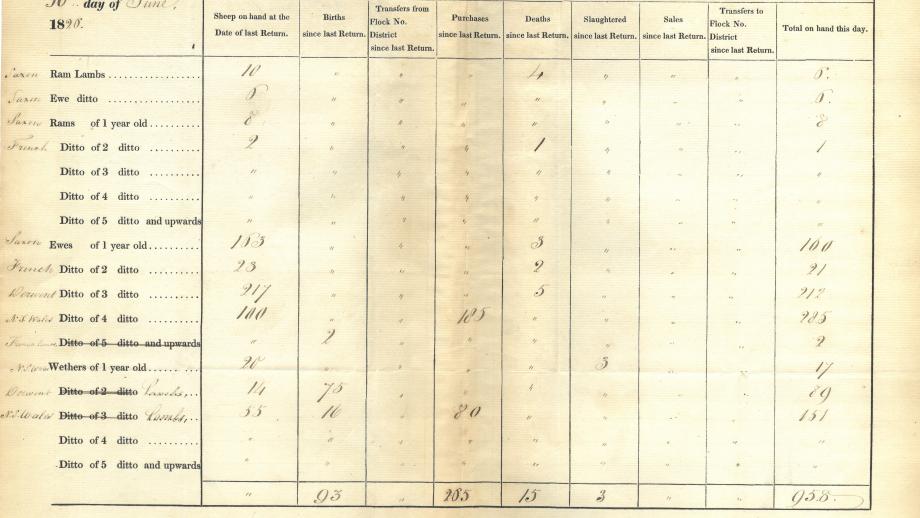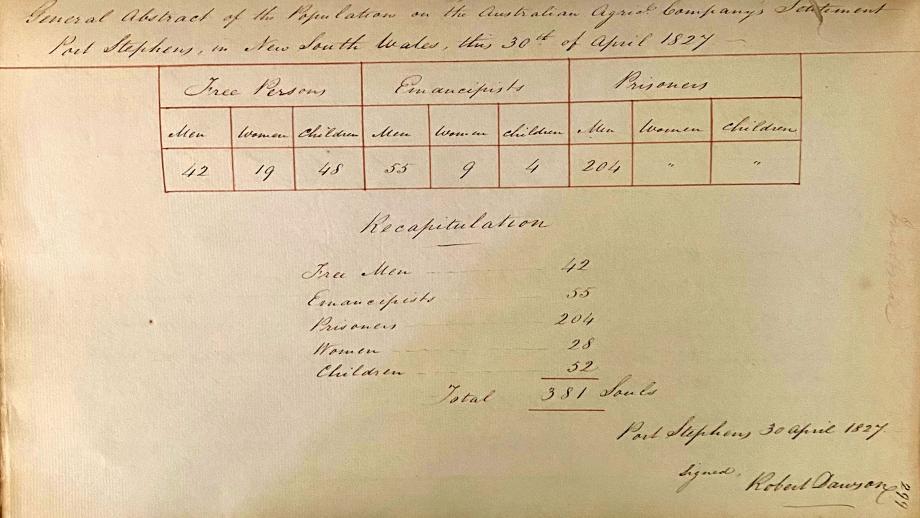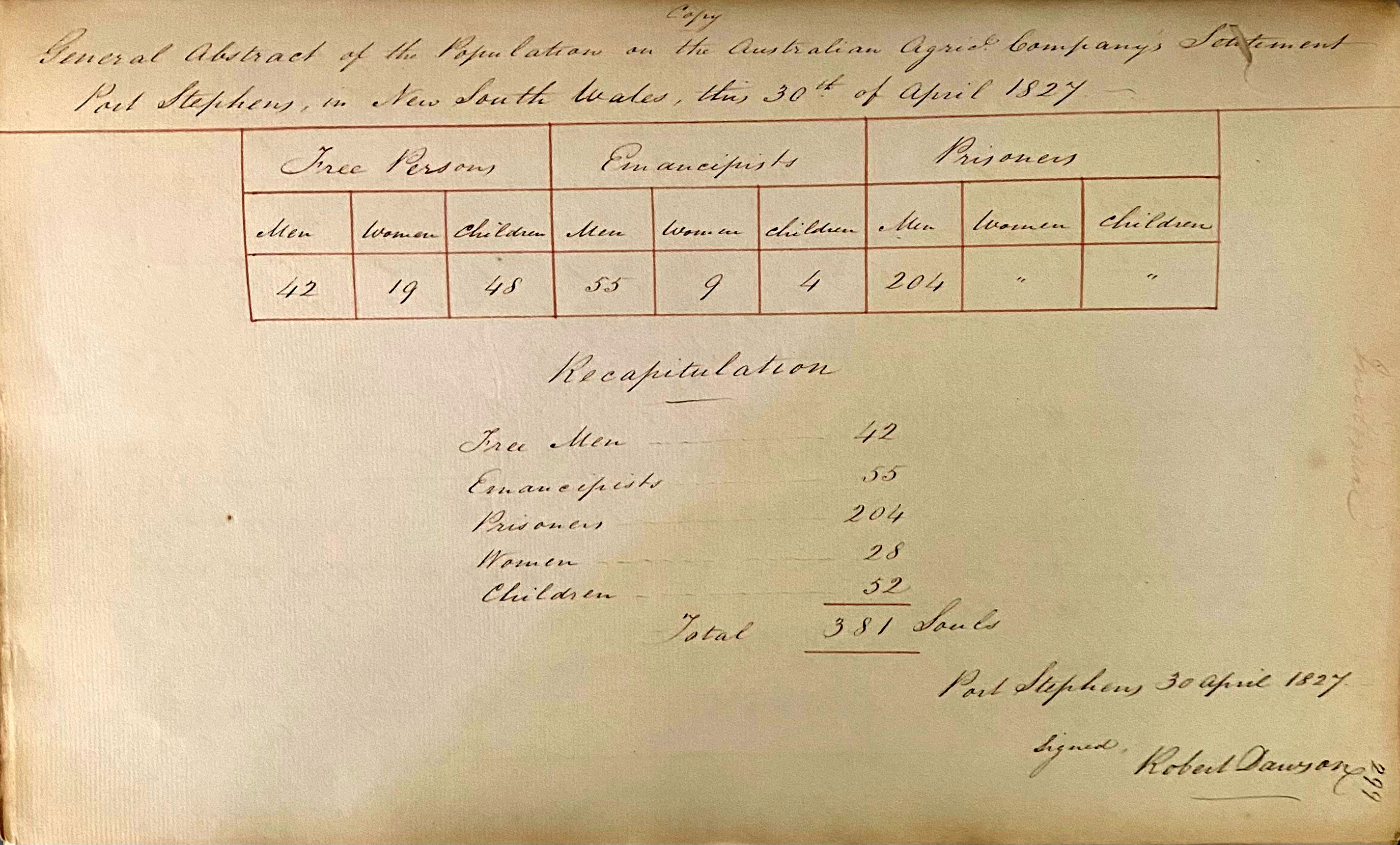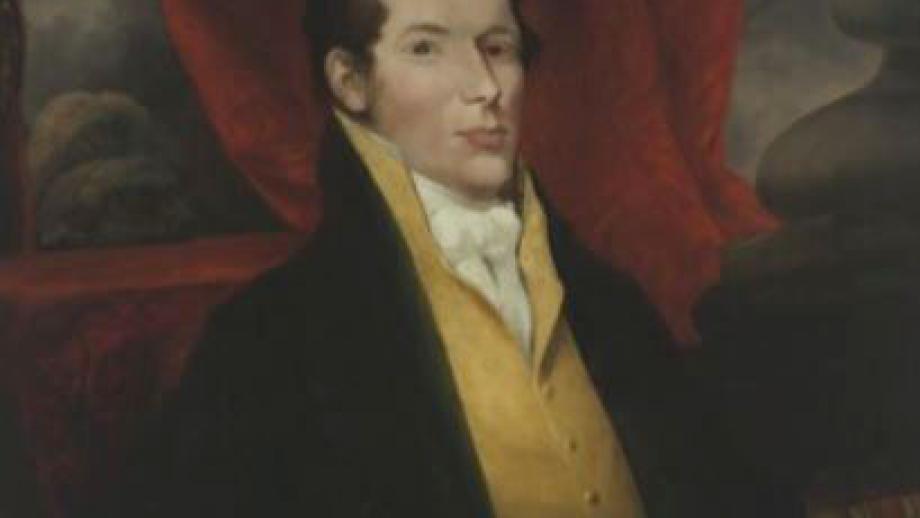Dawson's Demise and a Time of Change
The early years at Port Stephens were exceedingly challenging. In a report written by the former Chief Agent Robert Dawson following his tenure with the Company, he wrote “Our issuing store was a tent and our warehouse the open air. All our provisions and stores were kept covered with blady grass and we had no storekeeper… save a mechanic who could scarcely write his name”.
The Company's local Colonial Committee, having influenced Dawson in his choice of location, subsequently imposed upon the Company by selling it their own old and unhealthy sheep at inflated prices. For various reasons, Dawson unfortunately accepted these sheep. However, when he realised that the sellers intended to continue this practice, Dawson expressed his objections. In June 1827, he wrote a letter to Colonial Committee member James Macarthur Jnr, stating that he was no longer willing to allow the Company's land to be used as a dumping ground for old and ailing sheep from all over the colony. Further, other than pressuring him to take their sheep and those of their friends, the Committee offered Dawson very little assistance or advice, often passing on Dawson’s reports without comment (Dawson was not supposed to communicate directly with the Directors, though he did write to the Secretary, J.S. Brickwood).
Following this letter, Dawson's tenure with the Company became increasingly limited. On 27 December 1827 James Macarthur visited and submitted a scathing report criticising Dawson for mismanagement and excessive spending. In April 1828 Dawson was suspended by the Colonial Committee, and John Macarthur Snr as Acting Agent, repudiated the entire grant in August 1828. Based on Macarthur's report to the board of directors in London, Dawson was formally dismissed from his position in January 1829.
After his dismissal, Dawson returned to England to put his case to the directors – publishing his very convincing Statement of Services and, later, his The Present State of Australia. He finally returned to New South Wales in 1839 to his estate ‘Goorangola’ near Singleton. He served as a magistrate and became involved in coal mining schemes – to the Company’s great annoyance. He returned to England around 1860 and died at Greenwich in October 1865.
Following Robert Dawson’s dismissal as the Company’s Chief Agent, in December 1828 the Company appointed Mr James Edward Ebsworth to serve as an interim agent and manage the Company in New South Wales until a replacement could be sent from England. Although the committee was scathing of Dawson’s accomplishments, by the time Ebsworth took over, the Company had over 17,000 sheep in the colony.
Ebsworth had arrived in Sydney on the ship Frederick in November 1827, along with approximately 30 passengers as well as 222 Merino sheep, 7 horses, and stores bound for the Company’s Port Stephens Estate. He had travelled to Australia to take up the role of Company Accountant at Port Stephens. With Dawson’s departure, he acted as Chief Agent until January 1830. It was not the only time he would act in this senior role, serving as Acting Commissioner (later known as General Superintendent) between 1849 and 1851.
In 1829, the Company’s Colonial Committee was dissolved, and the new position of Commissioner was created to replace the Chief Agent’s position. This new Commissioner would undertake the functions that were previously jointly undertaken by the Chief Agent and Colonial Committee. On 7 July 1829 this new position was offered to Sir William Edward Parry, who would see the Company through “a very severe time of trial at a period when the financial resources of the Company were precarious” (Atchison 1970).
References
Atchison, J.F. 1970, ‘Archives of a Joint-Stock Company. The Australian Agricultural Company; its system of administration and its records, 1824-1970, Archives & Manuscripts: The Journal of the Australian Society of Archivists, vol. 4, no. 3, <https://publications.archivists.org.au/index.php/asa/article/view/6009>

